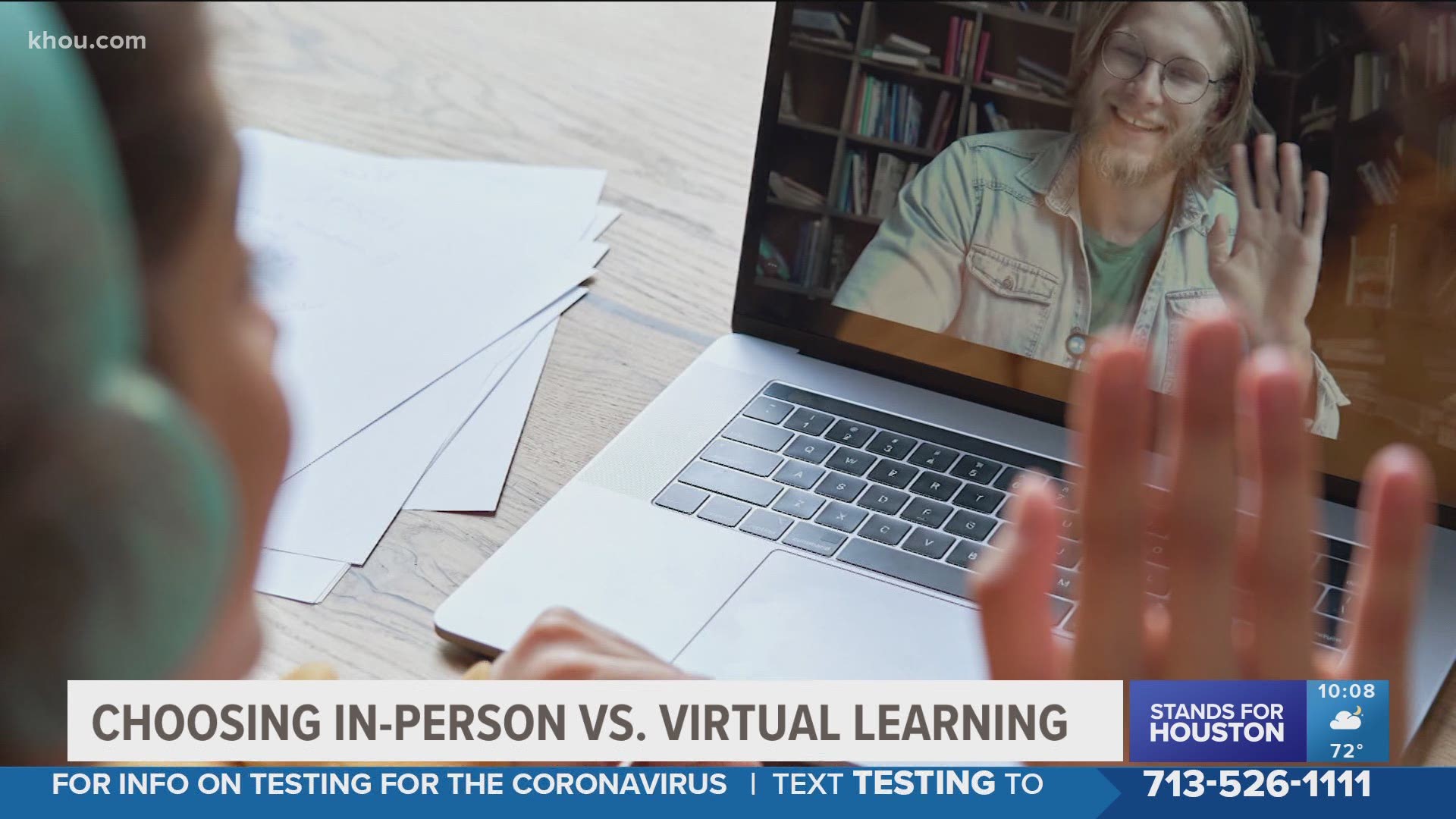HOUSTON — Low-income families are more likely to choose virtual learning for their children rather than to send them on campus this fall, according to a KHOU 11 analysis of records from 10 Houston-area school districts.
Under the Texas Public Information Act, we received data from Clear Creek ISD, Conroe ISD, Cy-Fair ISD, Humble ISD, Katy ISD, Klein ISD, Lamar CISD, Pasadena ISD, Spring ISD and Spring Branch ISD that includes the preferred learning method for nearly 550,000 students.
Overall, parents were split nearly evenly, with 51% choosing on-campus and 49% deciding on virtual learning.
But that changes when you filter the results for economically disadvantaged students, who qualify for free or reduced lunches. 47% of those students are on campus this fall, while 53% are staying at home.
April Peters-Hawkins, associate professor at the UH College of Education and a former teacher and principal, said health and safety concerns could be one reason for the higher numbers. Statistically, lower-income families are minorities, and COVID-19 has hit that population harder. Those families also are more likely to have elderly relatives living in the household, increasing concerns for exposure to the virus.
From an academic perspective, Peters-Hawkins said the data raises concerns about progress and performance.
“Are they just signed up for virtual instruction or are they actually engaged in the learning process, and what does that look like in those households?” she said.
The professor pointed to lessons learned from when the pandemic hit in the spring. Data submitted to the Texas Education Agency show that students of color were more likely to be disconnected from virtual learning or not engaged in the learning process.
“They found that black and brown children overwhelmingly just sort of disappeared off the radar,” she said.
And while districts have since ramped up their virtual learning plans and collectively purchased tens of thousands of computers to connect kids online, the so-called “COVID slide” is a phenomenon many researchers are studying closely.
“Is there worry that we are at the precipice of losing a whole set of students that were already at risk? The answer is clearly a 'yes' to that,” said Dan Potter, Associate Director of Regional Research at the Houston Education Research Consortium at Rice University.
Potter cautioned against blaming online education itself for increasing disparities or inequalities. He said it’s important to recognize the good aspects of technology—more customization, personalization and flexibility—that may benefit students and families coming from vulnerable circumstances.
The critical task going forward is closely tracking student progress and being able to adapt and adjust quickly.
“If in March of next year I can look at a school district and say, ‘well, it really turns out online learning wasn’t working for your economically disadvantaged kids.' That’s too late,” Potter said.

